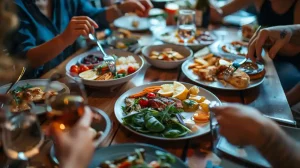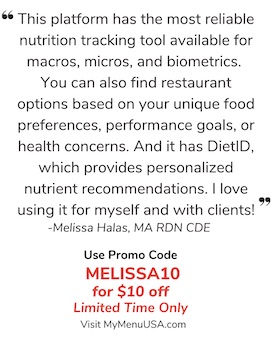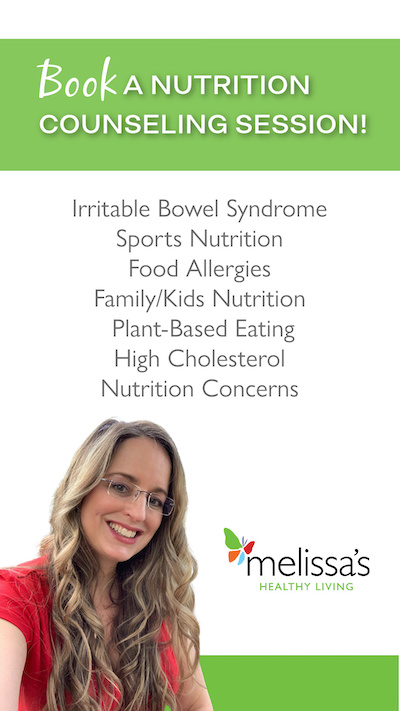
Healthy holiday eating doesn’t have to mean sacrificing flavor or traditions. With a few mindful choices, you can enjoy the season while staying on track with your wellness goals.
The holiday season often brings a whirlwind of social gatherings, delicious treats, and abundant meals that can challenge your health goals. But with thoughtful planning, strategic swaps, and awareness of potential food triggers, it’s possible to savor every moment and bite while staying on track. Here are 7 key ways you can enjoy holiday festivities while prioritizing your health.
1. Start the Day with a Balanced Breakfast
Avoid the temptation to skip breakfast in an attempt to “save calories” for later in the day, especially if you start out with healthy choices. Doing so often backfires, leading to increased hunger and less mindful choices at holiday meals. Eating breakfast supports:
- Metabolism activation
- Hunger control throughout the day
- Improved food choices and portion control
Action Items:
- Opt for fiber-rich whole grains such as oatmeal with berries and nuts, whole-grain toast with avocado and/or egg, or chia plant-based healthy breakfast pudding.
- Include a source of protein like eggs, yogurt, or nuts.
- Avoid sugar-heavy breakfast foods or refined carbohydrates like refined flour to prevent energy crashes.
2. Incorporate Whole Grains in Holiday Baking
Make simple, nutritious upgrades to your holiday menu by adding whole grains or nut—or bean-based flour. These provide vitamins, minerals, phytonutrients, and essential fiber to help prevent overeating and support heart health and cancer prevention.
Action Items:
- Replace white flour with whole-wheat flour or use a blend of whole wheat and oat flour in pies and baked goods.
- Use whole-wheat bread for stuffing or offer whole-grain dinner rolls instead of white ones.
- Introduce a new dish: like Socca bread made with garbanzo beans, try a quinoa or whole farro salad topped with roasted cubed vegetables like butternut squash or sweet potatoes and peppers for extra vitamins, minerals, and antioxidants.
3. Make Colorful Dishes for a Vibrant Holiday Table
Adding a rainbow of colors to your meals ensures you’re getting a wide variety of nutrients and phytonutrients. Different colors correspond to unique health benefits, so aim for at least three colors in your holiday dishes.
Action Items:
- Red Foods: Boost antioxidants and anti-inflammatory agents by adding foods like roasted beets, tomatoes, red bell peppers, or chili flakes.
- Orange & Yellow Foods: Rich in Vitamin C and antioxidants, they support heart health and the immune system. Incorporate sweet potatoes, yams, carrots, pumpkin, and orange/yellow bell peppers. Baked naval oranges with cinnamon, honey, and vanilla extract are delicious.
- Green Foods: Packed with lutein for good vision and healthy skin. Add dark leafy greens, green beans, asparagus, or broccoli.
- Blue & Purple Foods: Contain flavonoids that reduce heart disease risk and improve memory. Include options like purple cabbage, eggplant, blueberries, or purple potatoes.
4. Prioritize Your Favorite Holiday Foods
Holiday meals often come with an overwhelming amount of dishes and desserts. Focus on savoring your top favorites rather than trying to eat everything in one sitting.
Action Items:
- Identify and enjoy a few favorite dishes and practice mindful eating.
- Plan ahead for leftovers by bringing takeaway containers, so you can enjoy other holiday items without feeling pressured to consume everything at once.
- Pair leftovers with lean proteins, like turkey, to create balanced meals over the following days.
5. Be Mindful of Alcohol Intake
Alcoholic beverages can quickly add extra calories and often lead to less mindful eating due to lowered inhibitions.
Action Items:
- Choose water before one serving of alcohol. Also, give non-alcoholic beverages a try. I love Athletic beer and they have one brand that’s gluten-free.
- Choose lighter or less sugary options if you choose to drink.
- Consider forgoing alcohol entirely or sticking to your usual routine if you typically don’t drink.
6. Get Moving to Balance Holiday Indulgence
Physical activity helps improve mood, reduces stress, and makes it easier to maintain healthier eating habits.
Action Items:
- Start the day with a walk, family flag football game, or holiday-themed run.
- Organize a “Turkey Trot” or any fun physical activity with family and friends.
- Find ways to stay active together, whether it’s a casual game of catch, dancing, or simply taking a brisk walk.
7. Address Food Triggers and Emotional Eating
The holidays can bring about triggers that lead to overeating, such as stress, social situations, and exposure to tempting foods. Recognizing and managing these triggers is key to staying balanced.
Understanding Food Triggers A “food trigger” is a type of food that can lead to overeating or loss of control, often rich in fat, refined carbohydrates (like sugar or white flour), or salt. Food companies work hard to make these foods irresistible, but you can take back control with mindful strategies.
Action Items to Manage Triggers:
- Reflect on Triggers: Identify emotional, social, or situational cues that lead to overeating.
- Example: “I often overeat when stressed by holiday preparations.”
- Where do these triggers commonly occur? Is it in the living room while watching TV, at holiday parties, or late at night?
- Know your food triggers and make a plan to combat them before you’re in the situation.
- Create Healthy Distractions: When a craving strikes, try deep breathing, calling a friend, taking a walk, or engaging in a hobby.
- Mindful Eating: Eat without distractions, focusing on the taste, texture, and enjoyment of each bite. If you’re eating alone, listen to a podcast or music but avoid watching the television while eating. Give yourself permission to watch after your meal.
- Set Boundaries: Use smaller plates, set time limits for eating, or plan for balanced indulgences to reduce food FOMO (fear of missing out).
- Work with me: Sign up for nutrition counseling and learn how to approach the holidays with healthy and balanced strategies.
By incorporating these mindful eating and lifestyle strategies, you can have a joyful and healthy holiday season without compromising on taste or tradition.



